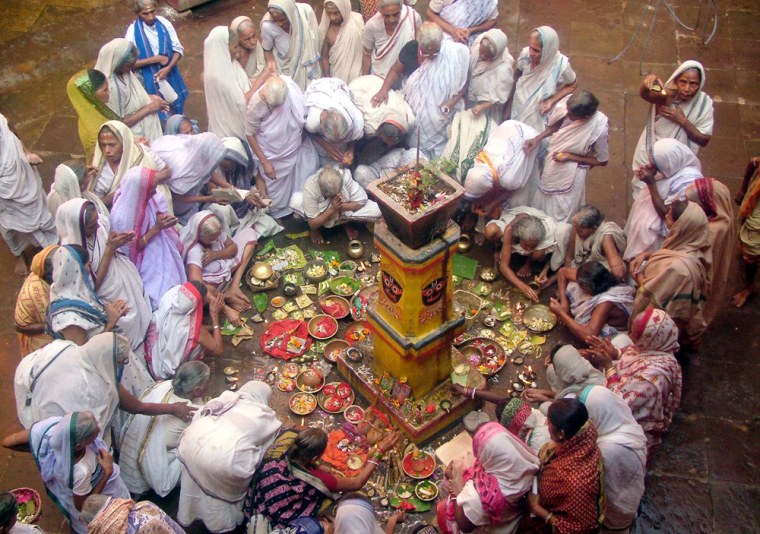No doubt the Taj Mahal steals the breath away. But as a repeat visitor to India, I have often arrived at its gates too exhausted to have much breath left to steal.
Many tourists report being treated like gobs of tourist putty in the hands of Agra's masterful touts, cajoled into unwanted side trips to trinket shops or pressed to hire an unauthorized tour guide.
In a survey published in 2006, the government of India found that 63 percent of foreign tourists complained of being cheated or harassed "in many tourist destinations like Agra," as well as Delhi, India's capital.
But there are endless alternatives for a holiday in India without the Taj, and even first-time visitors to the country might choose one of these circuits — provided they can stand up to friends back home boggled by the idea of visiting India without seeing the fabled monument.
On a nine-day visit to India earlier this year, my brother and I chose Calcutta, not Delhi, as our gateway into India. By doing so, we effectively ruled out a visit to the Mughal masterpieces of India's north, in the hope of finding adventure in a place with few tourist headaches. We succeeded.
Calcutta — also known as Kolkata — is the former capital of British India. Now the capital of West Bengal state, the city welcomed us with unforgettable scenes of everyday life.
On our first day, we slipped out of the hotel to take a simple walk, which became an all-day affair. The city swept us into the bustle of sidewalk merchants, cycle rickshaws and elegant Ambassador cars.
The impossibly clean subway system shuttled us to the Maidan, the city's large park, which opened up into a panorama of thousands of Hindu pilgrims visiting for the annual Makar Sankranti festival, which often falls in January. These pilgrims had returned to the city from a pilgrimage site to shop, eat and relax before boarding buses and trains back to their villages and towns.
On our second day, we arranged a day tour at our hotel. Our wonderful guide, Bikash Mehra, escorted us deeper into the belly of the city. For all the digs Calcutta takes about its poverty even from other Indians, Bengalis beam about the city's unmistakably intellectual bent and a relaxed vibe that somehow perseveres amid the noise and dust. Bikash brought us to the Indian Coffee House for Bengalis' favorite pastime — chatting. My brother and I sipped hot, milky coffee, ate buttered toast, and peppered Bikash for details about Calcutta's role in India's independence movement and about everyday life for the city's residents.
Sated, we continued our tour, driving to the workshops of Kumartuli, where artisans were carving images of Saraswati, the goddess of knowledge. These idols would later be dressed, adorned and submerged in water for a puja, or religious ritual, in her honor. But not everything being made in Kumartuli was sacred. We queried one sculptor about the name of the god he was crafting; he smiled and pointed to a child's action figure that he had been hired to create in clay.
On our city tour we also met the nuns who continue the work of Mother Teresa, whose tomb can be visited at the Mother House in the central part of the city. The simple building where the tomb is located is quiet and calm. We removed our shoes and paid our respects, and continued to an instructive exhibit on her life.
From Calcutta, one can visit the tea country of Darjeeling, travel to the Sundarbans tiger reserve, or head to India's northeastern states that border Myanmar. We chose, instead, to visit the state of Orissa, where countless temples preserve a rich history.
Of 4.4 million foreign tourists who came to India in 2006, fewer than 1 percent, or 40,000, visited Orissa. Most parts of the state suffer from the unremitting poverty and economic stasis that afflicts much of India's interior. (Orissa was ravaged by cyclones in 1999 that killed 10,000 people.)
As our overnight train pulled away from the congested Howrah railway station, we locked the door to our first-class compartment that we shared with two men, a former railway manager and a businessman, with whom we chatted until the yawns came and the night lights were switched off.
Morning broke, and as we rumbled past remote villages, it dawned on me that we had entered an area that is effectively off the tourist map.
We began in Puri, a coastal city where we ate well and took an enjoyable stroll on the beach along the Bay of Bengal.
From Puri, we hired a car to take us to Konarak, the site of the ornate Sun Temple, which has been called one of the finest Hindu temples ever constructed. The chariot-shaped monument is adorned with carvings of dancers, lions, gods and couples in erotic embrace. Sanctioned guides give energetic, if slightly confusing, tours of the 13th century monument. But lines were short and access was easy, making our visit to the Konarak temple a reminder that India's allure can be had without the crowds of the Taj.
In 2001, the most recent year for which I could find comparable figures, fewer than 4,000 foreigners visited the Konarak temple. In contrast, the Taj Mahal received 250,000 foreign visitors that year, along with millions of Indians. We were glad not to have been among them.
